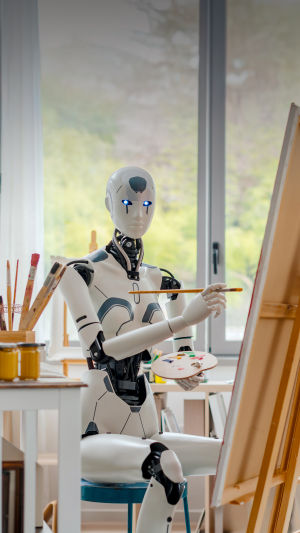We’re living in a remarkable moment—an era where human imagination meets artificial intelligence to reshape the future of art.
The collaboration between AI and human artists isn’t just a passing trend; it’s becoming a revolution that changes how we define creativity, beauty, and authorship.
Across the globe, digital galleries, AI-driven studios, and immersive exhibitions are showcasing artworks born from this partnership. Paintings generated by algorithms, sculptures enhanced through machine learning, and music composed with code—these are no longer science fiction. We’re stepping into an age where creativity flows from both human emotion and digital intelligence, blending instinct and innovation like never before.
<h3>When Machines Inspire the Mind</h3>
AI can analyze countless images, learn artistic styles, and generate new compositions in seconds. But what makes this collaboration truly fascinating is not the machine’s ability—it’s how it inspires us to think differently. When we create alongside AI, we don’t just program a tool; we start a conversation with technology.
Artists now use AI to visualize abstract ideas, experiment with surreal imagery, or simulate complex effects that would take days to complete by hand. These AI suggestions often spark unexpected directions, pushing us to explore deeper layers of imagination. The magic lies in the exchange—AI provides patterns, but we bring meaning. The result is art that reflects both logic and emotion, data and dreams.
<h3>Redefining the Role of the Artist</h3>
Traditionally, the artist was seen as a solitary genius—a single mind shaping visions into reality. But today, creativity is becoming more collaborative. The modern artist is not just a painter, sculptor, or photographer—they are also a coder, designer, and storyteller.
By working with AI, we learn to guide algorithms like we would guide a brush. Prompts, adjustments, and emotional choices shape the outcome, just as color and composition once did. AI can produce infinite versions of an image, but it can’t decide which one feels right. That sense of beauty and emotional truth remains deeply human.
This redefined role doesn’t reduce our value as creators—it amplifies it. The artist’s touch is what turns raw data into art that moves people. We are no longer working against technology, but with it, blending human sensibility with machine intelligence to create something that neither could achieve alone.
<h3>Challenges and Reflections in Co-Creation</h3>
Still, this new creative relationship raises big questions. Can a machine truly understand emotion? What does “originality” mean when art is co-created with algorithms? These are challenges that push us to rethink art’s essence.
Some fear that AI-generated art may overshadow human-made works, but the truth is, AI has no intention or emotion—it reflects the input and direction it receives. The soul of the artwork always depends on us. We decide the story, the context, and the emotion behind every detail or note. In this sense, AI is not replacing the artist—it’s expanding the canvas.
By embracing these tools with awareness and creativity, we gain new ways to express human experience. Instead of competing with technology, we can let it enhance our curiosity and open new artistic pathways that were once impossible.
<h3>The Beauty of Collaboration</h3>
What makes this era so exciting is the beauty of collaboration itself. AI can analyze, calculate, and process vast data sets, but it’s our passion, intuition, and culture that give art depth. Together, humans and AI form a creative duo—one that combines emotional warmth with analytical precision.
This partnership also makes art more accessible. With AI-powered tools, more people can explore their creative potential without needing years of training. Someone with an idea can turn it into a visual story, soundscape, or digital installation within minutes. Creativity is no longer limited by skill—it’s defined by imagination and intent.
Whether it’s fashion design, filmmaking, or music composition, co-creation is giving birth to a new generation of artists who use AI not as a replacement, but as a partner. We’re entering a time when creativity belongs to everyone willing to experiment and dream.
<h3>Final Reflections for</h3>
Lykkers, as we move forward into the world of AI and human co-creation, let’s remember what truly makes art meaningful. AI can analyze, generate, and even surprise us—but it’s our feelings, curiosity, and imagination that turn those results into something real and powerful.
Each collaboration between humans and AI is more than just technology at work—it’s a meeting of logic and emotion, precision and passion. When we create together, we don’t just make art; we shape the story of our time.
So, let’s keep exploring, experimenting, and believing in the magic that happens when creativity and technology unite. Because the future of art isn’t about choosing between human or machine—it’s about what we can achieve together.





